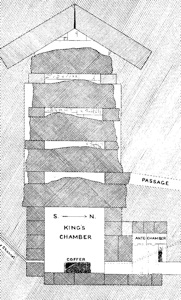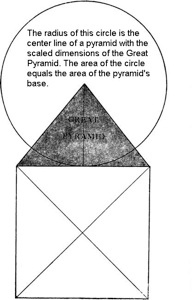
Who built the Great Pyramid?
Excavations by Mark Lehrner and Zahi Hawass have found the vast dormitories that housed the Egyptian workers who built the Pyramid, where they were well fed with fish and bread and beer.
But this traditional understanding of who built the Pyramid received a major assault by amateur Egyptologists Graham Hancock and Robert Bauval in their "The Message of the Sphinx, 1996." Briefly stated, the two men came to believe that an advanced culture disappeared during the Ice Age, and its survivors gained footholds throughout the world, establishing ancient cultures like the Egyptians, the Maya and the Easter Islanders. It was thus in their interest to show that the Pyramid was not built by the Egyptians, but by a previous master race of some kind. It should be noted here also that a small number of writers (Zechariah Sitchin, Erich von Daniken) believe the Pyramids were built by aliens who visited the planet in ancient times, so they too would be looking for older dates for the construction of the Pyramid.
The strongest archaeological proof from the Pyramid itself to defend the traditional date of the Pyramid's building was the find in 1837 by Howard Vyse of quarry markings on large stones in the relieving sections above of the King's Chamber. The markings included the cartouche of Pharaoh Khufu.
For years Hancock and Bauval wrote vigorously against the validity of these markings. They wrote that the acceptance of Vyse's quarry marks by Egyptologists "verges on intellectual chicanery."
It came as quite a surprise, then, after such cocksure pontifications, that Hancock and Bauval reversed their position and accepted the Vyse markings as proof of the traditional dating.


